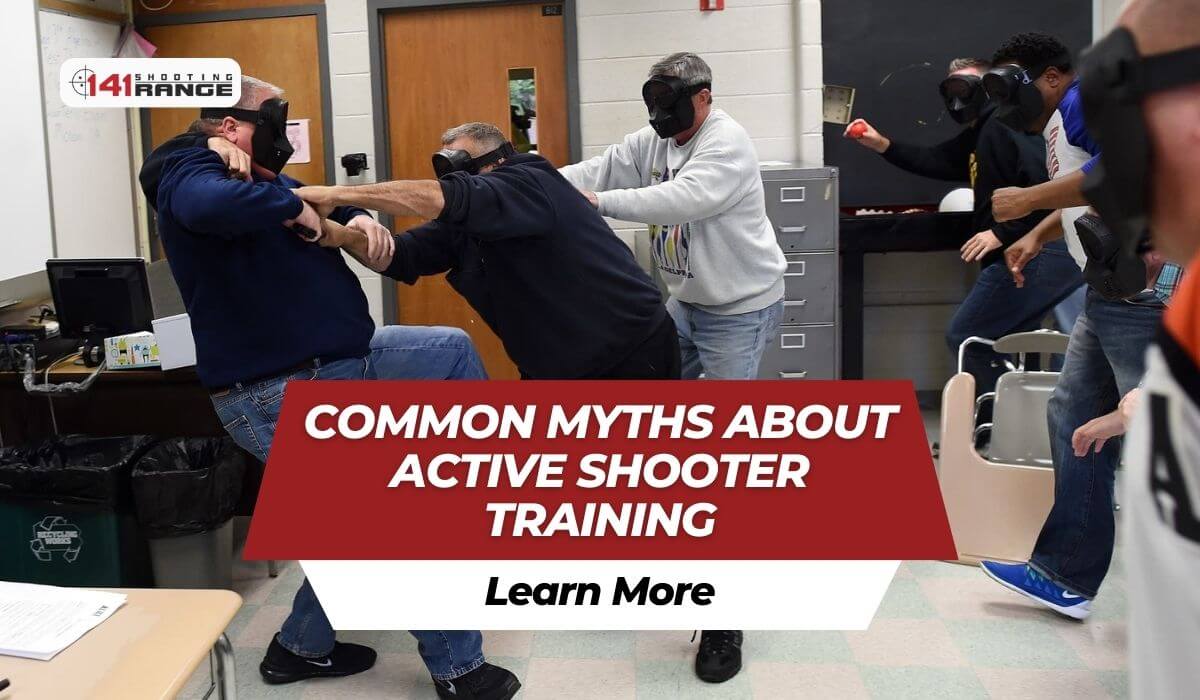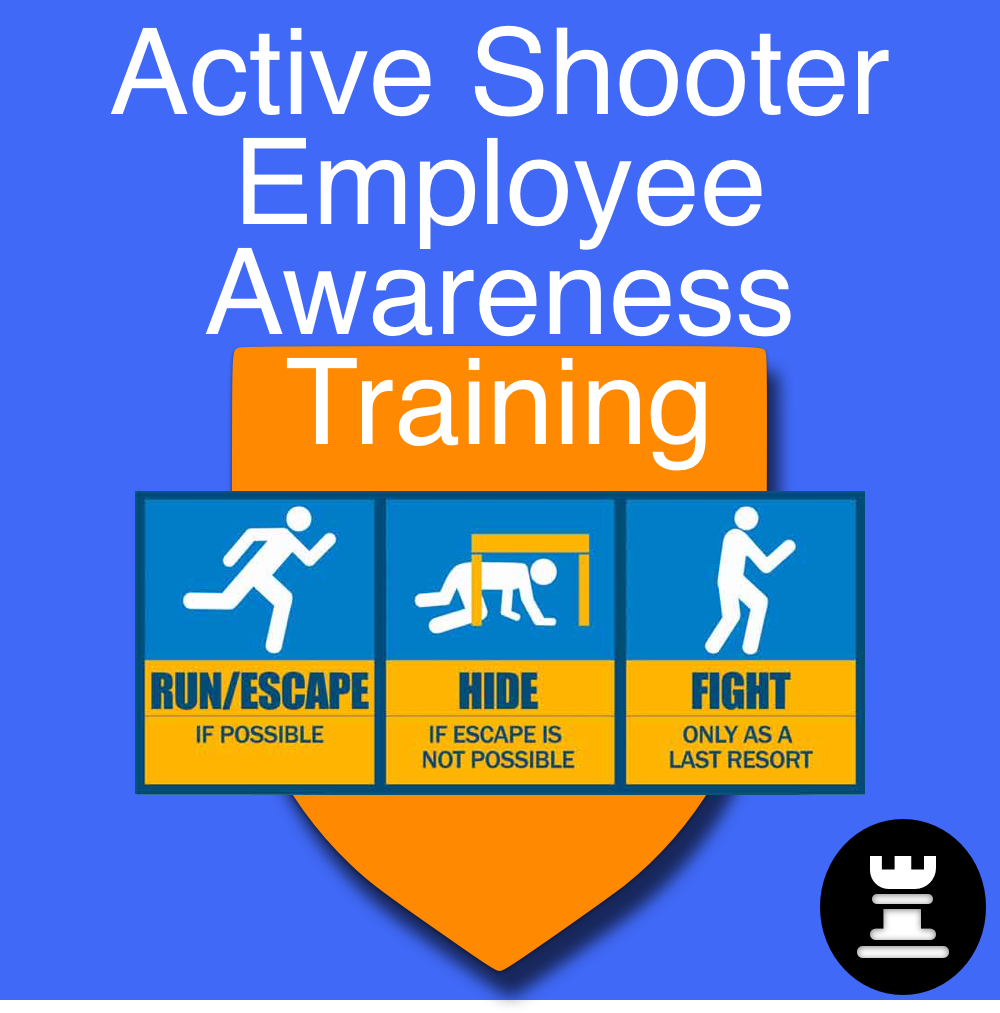The Advantages of Continuous Active Shooter Training for Neighborhood Protection
The Advantages of Continuous Active Shooter Training for Neighborhood Protection
Blog Article
Executing Active Shooter Training: Best Practices for Creating a Safe and Prepared Neighborhood Atmosphere
As neighborhoods challenge the upsetting reality of energetic shooter events, the application of comprehensive training programs ends up being imperative. A successful method rests on not just the advancement of customized curricula that attend to neighborhood threats but likewise the involvement of diverse stakeholders. By utilizing a range of training approaches, communities can guarantee that all members are furnished with crucial abilities. The difficulty lies in maintaining an adaptive framework that develops with emerging hazards. What are the critical components that can transform a common training program into a robust version for area resilience?

Recognizing the Requirement for Educating
In a period marked by increasing events of physical violence in public rooms, recognizing the need for active shooter training has never ever been a lot more critical. Extensive training campaigns can outfit individuals with the knowledge and skills to respond emphatically.
Training promotes a sense of empowerment and readiness, making it possible for individuals to feel more secure in their environments. The benefits of active shooter training expand beyond instant action; they consist of enhancing interaction methods and improving total safety measures within companies.
Secret Parts of Effective Programs
Effective active shooter training programs include numerous essential components that improve preparedness and response abilities. Comprehensive curriculum growth is necessary, making sure that training content is appropriate, evidence-based, and customized to the particular needs of the company or community. This includes recognizing the dynamics of energetic shooter occurrences and the mental effect on individuals included.
2nd, reasonable training scenarios need to be employed to mimic possible situations, allowing participants to exercise decision-making and response methods in a regulated environment. These drills help with muscle mass memory and construct confidence among participants.
Third, a concentrate on communication protocols is critical. Establishing clear lines of communication amongst legislation enforcement, emergency -responders, and individuals ensures collaborated feedbacks during an event. Routine updates and refresher course training courses aid maintain interaction pathways clear and effective.
Fourth, ongoing assessment and comments devices should be integrated right into the training program - active shooter training. Assessing the efficiency of training through participant feedback and efficiency metrics permits continual improvement
Lastly, fostering a culture of safety and readiness within the neighborhood urges vigilance and proactive measures, guaranteeing that individuals are not just experienced yet additionally participated in preserving a secure environment.
Engaging Community Stakeholders

To effectively involve these stakeholders, it is important to connect the objectives and advantages of the training. Holding informative sessions can aid clear up the training's purpose, address concerns, and detail the duties each stakeholder may play. Creating a stakeholder advisory committee can promote ongoing dialogue, enabling for varied point of views and understandings to be incorporated into the training program.
Building connections with community leaders and organizations is likewise important. Their assistance can boost outreach efforts, increase participation, and make sure that training is tailored to the unique needs of the neighborhood. Additionally, stakeholders can assist in distributing details and sources, enhancing the message of safety and readiness.
Ultimately, engaging community stakeholders not only enhances the training effort however likewise grows a feeling of possession amongst citizens, leading to a more durable and informed community capable of responding effectively to prospective dangers.
Training Delivery Approaches
Making use of a variety of training delivery approaches is necessary to fit the diverse learning designs and requirements of participants in energetic shooter training programs (active shooter training). Efficient training can take several kinds, including talks, hands-on simulations, on the internet modules, and interactive workshops. Each approach serves a distinct objective and can boost the general learning experience

On the internet components active shooter training offer versatility and accessibility, allowing individuals to learn at their own rate. These can consist of videos, quizzes, and discussions to gauge understanding. Interactive workshops motivate team conversations and problem-solving, promoting team effort and interaction skills.
Integrating a combined approach that combines these methods not just enhances the training experience however likewise makes certain that participants are better prepared to respond successfully in case of an energetic shooter situation (active shooter training). By resolving numerous learning choices, organizations can create a much more educated and responsive community
Continuous Examination and Renovation
Normal analysis and improvement of energetic shooter training programs are important to preserving their importance and performance. As threats develop, so should the methods and techniques used in training. Continual analysis makes certain that training web content mirrors the most recent intelligence on active shooter incidents, incorporating lessons picked up from current events and adjusting for emerging trends.
To promote this procedure, organizations ought to establish responses devices that consist of participant evaluations, specialist evaluations, and occurrence debriefs. Accumulating information on participant efficiency during drills and exercises is essential, as it highlights locations needing improvement and educates future training sessions. Furthermore, engaging with regulation enforcement and emergency -responders can provide beneficial insights into the functionality and applicability of training protocols.
Consistently scheduled testimonials of training products and methods need to be mandated, fostering an atmosphere of development and adaptability. Organizations must also encourage a society of continuous learning, where personnel really feel empowered to suggest modifications based upon their experiences. By devoting to continual examination and renovation, companies not only boost the performance of their active shooter training programs but browse around this site also reinforce their overall dedication to safety and security and readiness within the community.
Final Thought
In final thought, efficient execution of active shooter training demands a comprehensive approach that focuses on area involvement and sensible simulations. By creating tailored curricula, integrating diverse training methods, and cultivating read this cooperation amongst stakeholders, communities can improve preparedness. Continual analysis and feedback mechanisms are essential for adjusting programs to emerging dangers, consequently strengthening total security. Inevitably, a commitment to ongoing training and enhancement grows a society of watchfulness and readiness, making sure a safer atmosphere for all area participants.
Report this page